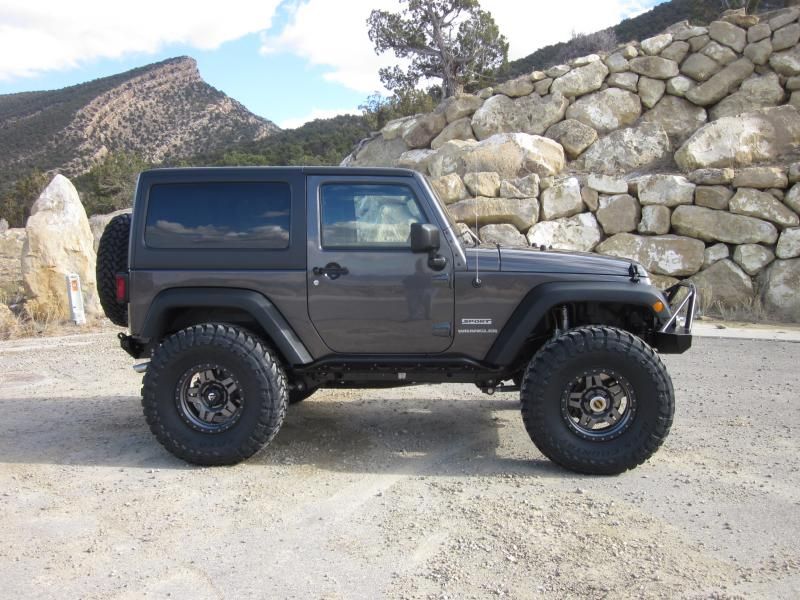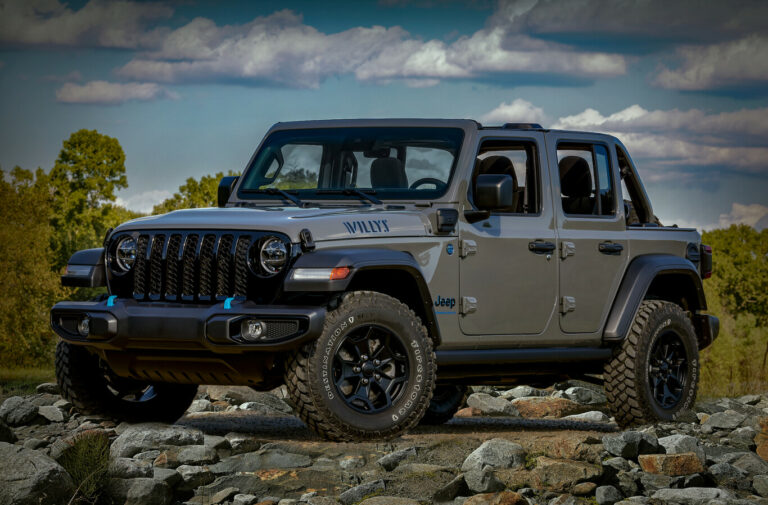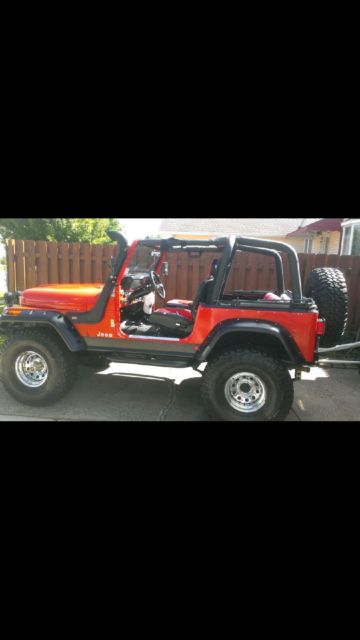Lifted Jeep Wrangler JK For Sale: Your Ultimate Guide to Finding the Perfect Off-Road Beast
Lifted Jeep Wrangler JK For Sale: Your Ultimate Guide to Finding the Perfect Off-Road Beast jeeps.truckstrend.com
The Jeep Wrangler JK (2007-2018) is an icon, a symbol of freedom, adventure, and unparalleled off-road capability. But for many enthusiasts, the stock JK is just a starting point. Enter the Lifted Jeep Wrangler JK. More than just a cosmetic upgrade, a lifted JK is a statement, a significant enhancement to its already impressive prowess, offering increased ground clearance, the ability to fit larger tires, and an undeniable aggressive stance that turns heads everywhere it goes. For those seeking to conquer more challenging terrains or simply cruise the boulevard with an imposing presence, a lifted JK for sale represents the pinnacle of the Wrangler experience.
This comprehensive guide will delve into everything you need to know when considering a lifted Jeep Wrangler JK, transforming you from a curious browser into an informed buyer ready to make the right choice.
Lifted Jeep Wrangler JK For Sale: Your Ultimate Guide to Finding the Perfect Off-Road Beast
Why Choose a Lifted JK? The Allure of Elevated Performance
The decision to buy a lifted JK isn’t just about aesthetics, though its commanding presence is certainly a major draw. The functional benefits are substantial:
- Superior Off-Road Capability: The primary advantage of a lift kit is increased ground clearance. This allows the Jeep to navigate over larger obstacles like rocks, logs, and deep ruts without scraping the undercarriage, protecting vital components.
- Accommodate Larger Tires: Lifting the JK creates space in the wheel wells for significantly larger diameter tires. Larger tires improve traction, provide a bigger footprint for flotation on soft surfaces (sand, snow), and further increase ground clearance at the axle.
- Enhanced Articulation: Many quality lift kits include components designed to improve wheel articulation (the ability of the wheels to move independently up and down), allowing the Jeep to maintain better contact with uneven terrain, thus improving traction.
- Aggressive Aesthetics: There’s no denying the visual impact. A lifted JK with aggressive tires looks formidable, powerful, and ready for anything. It’s a reflection of the owner’s adventurous spirit.
- Improved Visibility: The elevated driving position offers a better view of the road and surrounding terrain, which can be beneficial both on and off-road.

Understanding the Lift Kit: More Than Just Springs
When buying a lifted JK, it’s crucial to understand what goes into the lift itself. Not all lifts are created equal, and the quality and type of components significantly impact performance, safety, and longevity.

- Budget Boosts (Spacer Lifts): These are the simplest and most affordable lifts, using spacers above the coil springs or between the body and frame. They provide lift without changing suspension geometry, making them suitable for mild lifts (1-2 inches) and larger tires (up to 33 inches) primarily for aesthetics or light off-roading.
- Coil Spring Lifts: These kits replace the factory coil springs with longer, often stiffer, aftermarket springs. They typically offer 2.5 to 4 inches of lift and are a significant upgrade in terms of performance. They usually include new shocks, and sometimes other components like track bar brackets or extended sway bar links.
- Short Arm vs. Long Arm Lifts:
- Short Arm Lifts: Utilize factory control arm mounting points but replace the stock control arms with longer, adjustable ones. They are great for 2.5 to 3.5 inches of lift, offering a good balance of road manners and off-road capability.
- Long Arm Lifts: Replace the factory control arms with much longer ones, relocating their mounting points further back on the frame. This dramatically improves suspension geometry, reducing control arm angles for better ride quality, increased articulation, and superior off-road performance, especially for lifts of 4 inches or more. However, they are more complex, expensive, and sometimes impact ground clearance under the frame.

- Key Components to Look For:
- Shocks: Matched to the lift height and intended use (daily driving, heavy off-roading).
- Springs: Quality springs that provide consistent lift and good ride characteristics.
- Control Arms: Essential for proper axle positioning and caster correction. Adjustable arms are preferred.
- Track Bars: Maintain proper axle centering. Adjustable track bars or relocation brackets are necessary.
- Sway Bar Disconnects/Links: Allow for increased articulation off-road.
- Driveshafts: For lifts over 2.5-3 inches, aftermarket driveshafts (especially the front) may be necessary to prevent vibration and premature wear due to increased angles.
- Bump Stops: Crucial to prevent tires from rubbing and protect shocks from bottoming out.
Key Considerations When Buying a Lifted JK
Purchasing a modified vehicle requires a more discerning eye than buying a stock one. Here’s what to prioritize:
- Purpose and Use: Are you looking for a daily driver that looks cool, or a hardcore trail rig? Your intended use will dictate the appropriate lift type, tire size, and additional modifications.
- Lift Height and Tire Size: Be realistic. A 2.5-3.5 inch lift with 35-inch tires is a popular, balanced setup for many. Taller lifts (4+ inches) often require more extensive modifications (re-gearing, driveshafts, steering components) to perform optimally and safely.
- Gearing: This is paramount! Larger tires effectively "raise" your gearing, making the engine work harder, reducing acceleration, and impacting fuel economy. A JK with 35-inch tires and stock 3.21 or 3.73 gears will feel sluggish. Ideally, a lifted JK with 35-inch tires should have 4.56 or 4.88 gears, and 37-inch tires often demand 5.13 or 5.38. Always ask about gearing!
- Axles: Stock JK axles (Dana 30 front, Dana 44 rear on Rubicons, Dana 35/44 on Sports/Saharas) can handle moderate off-roading with 35-inch tires if driven responsibly. However, 37-inch tires and aggressive off-roading will likely necessitate upgraded axle shafts, stronger ball joints, or even completely new axle assemblies.
- Drivetrain Components: Inspect driveshafts for wear or damage, especially at the U-joints. Look for aftermarket driveshafts, particularly in the front, if the lift is significant.
- Steering Components: Larger tires and lifts put more stress on steering. Look for upgraded tie rods, drag links, and a heavy-duty steering attenuator or stabilizer. Check for any play in the steering.
- Brakes: Larger tires mean more rotating mass, requiring more stopping power. Ensure the JK has upgraded brakes (larger rotors, calipers, or pads) to compensate.
- Overall Build Quality: Was the lift professionally installed by a reputable shop, or was it a DIY job in a backyard? Look for clean welds, proper torque on bolts, and correct routing of lines. A poorly installed lift can lead to dangerous handling issues like the "death wobble."
- Maintenance History: A modified vehicle often requires more diligent maintenance. Ask for service records, especially concerning suspension, steering, and drivetrain components.
- Legality: Check your local state or country laws regarding maximum lift height and tire protrusion.
Where to Find Lifted JK Wranglers for Sale
Your search for a lifted JK will likely lead you to several avenues:
- Specialized Off-Road Dealerships: Some dealerships specialize in lifted trucks and Jeeps, often offering professionally built and warrantied vehicles.
- Private Sellers: Websites like Craigslist, Facebook Marketplace, and dedicated Jeep forums (e.g., JK-Forum, WranglerForum) are treasure troves for private sales. You might find a better deal here, but due diligence is even more critical.
- Online Auction Sites: eBay Motors can have listings, but inspection before purchase can be challenging.
- Local Classifieds & Word-of-Mouth: Don’t underestimate local bulletin boards or asking around at local Jeep clubs.
- Used Car Websites: AutoTrader, Cars.com, and similar sites will have listings, though filtering specifically for "lifted" might require careful keyword searches.
Inspecting a Lifted JK Before Buying
This is perhaps the most critical step. Never buy a lifted JK without a thorough inspection.
- Visual Inspection (Exterior & Interior):
- Rust: Jeeps are prone to rust, especially on the frame, suspension components, and body seams. Pay close attention to the frame rails, control arm mounts, and suspension brackets.
- Body Damage: Look for dents, scratches, or signs of accident repair. Minor trail pinstriping is normal, but significant damage indicates harder use.
- Tires & Wheels: Check tire tread depth, even wear, and any damage to the sidewalls. Ensure wheels are not bent or cracked.
- Underbody Inspection:
- Lift Kit Components: Identify the brand and type of lift kit. Inspect all components (springs, shocks, control arms, track bars, brackets) for damage, bends, cracks, or signs of improper installation. Look for loose bolts.
- Driveshafts: Check for excessive play, tears in boots (CV style), or signs of vibration.
- Axles: Look for leaks around the differential covers and axle seals. Check for bent axle tubes.
- Frame: Inspect for any cracks, especially around suspension mounting points.
- Skid Plates: Check for heavy gouges or bends, indicating frequent off-road use.
- Engine Bay & Fluids: Check for fluid leaks, proper fluid levels, and any signs of neglect.
- Test Drive:
- On-Road: Pay attention to steering (is it vague or precise?), braking (does it stop straight and effectively?), and ride quality (is it excessively harsh or bouncy?). Listen for unusual noises (clunks, grinding, humming).
- Vibrations: Any vibrations, especially at certain speeds, could indicate driveline issues, unbalanced tires, or improper alignment.
- "Death Wobble": If you experience violent shaking of the steering wheel, particularly after hitting a bump, this is the dreaded "death wobble" – a serious safety concern that needs immediate attention. Avoid any JK exhibiting this.
- Professional Pre-Purchase Inspection (PPI): Highly Recommended. Have an independent mechanic, preferably one specializing in Jeeps or 4x4s, inspect the vehicle. They can identify issues you might miss.
Pricing a Lifted JK: What to Expect
The price of a lifted JK for sale varies wildly based on several factors:
- Year and Mileage: Newer, lower-mileage JKs will command higher prices.
- Trim Level: Rubicon models, with their stronger axles, lockers, and lower transfer case gearing, are inherently more valuable, especially when lifted. Sport and Sahara models are more common and generally more affordable.
- Quality of Lift Kit: A professionally installed, high-quality lift kit (e.g., AEV, MetalCloak, Teraflex, Synergy) adds significant value. Cheap, generic lifts may not.
- Additional Modifications: Beyond the lift, consider the value of upgraded bumpers, winches, rock sliders, LED lighting, interior upgrades, or engine performance mods.
- Condition: Overall condition, maintenance history, and rust levels heavily influence price.
General Price Range (Highly Variable):
| JK Model & Build Type | Year Range | Estimated Price Range (USD) | Key Modifiers/Considerations |
|---|---|---|---|
| Mild Lift (2.5-3.5") | 2007-2011 | $15,000 – $22,000 | Spacer or budget coil lift, 33-35" tires, basic aftermarket. |
| Mild Lift (2.5-3.5") | 2012-2018 | $20,000 – $30,000 | Quality coil lift, 35" tires, good condition, minor upgrades. |
| Moderate Lift (3.5-4.5") | 2007-2011 | $18,000 – $28,000 | Quality short/long arm lift, 35-37" tires, re-geared, armor. |
| Moderate Lift (3.5-4.5") | 2012-2018 | $25,000 – $40,000 | High-end lift, 37" tires, re-geared, bumpers, winch, etc. |
| High-End Build/Rubicon | 2012-2018 | $35,000 – $55,000+ | Premium long arm lift, 37"+ tires, upgraded axles/components, extensive mods. |
| Heavily Modified/Custom | Any JK Year | $40,000 – $70,000+ | Custom fabrication, engine swaps, full-width axles, extreme builds. |
Note: These are rough estimates and can fluctuate significantly based on location, market demand, specific modifications, and vehicle condition.
Tips for a Smooth Purchase
- Ask for Documentation: Request receipts for the lift kit and any other major modifications, as well as maintenance records.
- Verify VIN: Run a VIN check (CarFax, AutoCheck) to look for accident history, flood damage, or title issues.
- Negotiate: Don’t be afraid to negotiate the price, especially if you find minor issues during your inspection.
- Consider Insurance: Inform your insurance company that you’re buying a modified vehicle. Some modifications may affect coverage.
Potential Challenges & Solutions
- Poorly Installed Lifts: Can lead to "death wobble," premature component wear, and poor handling.
- Solution: Professional pre-purchase inspection is key. Avoid vehicles with questionable build quality.
- "Death Wobble": A violent oscillation of the front end. It’s not a Jeep design flaw but rather a symptom of worn or improperly installed steering/suspension components.
- Solution: Address worn parts (ball joints, tie rod ends, track bar), ensure proper alignment, and verify lift installation. Avoid vehicles exhibiting this.
- Increased Maintenance Costs: Lifted Jeeps often require more frequent inspections and maintenance of suspension, steering, and driveline components.
- Solution: Factor this into your budget. Learn basic DIY maintenance or find a trusted 4×4 shop.
- Worse Fuel Economy: Larger tires and modified aerodynamics will inevitably reduce MPG.
- Solution: Re-gearing helps, but accept that fuel economy will be lower.
Frequently Asked Questions (FAQ)
Q1: Is a lifted JK safe for daily driving?
A1: Yes, a properly installed and well-maintained lift kit does not compromise safety for daily driving. Poorly installed or cheap lifts, however, can create dangerous handling issues.
Q2: What is the "death wobble" and how can I avoid it?
A2: "Death wobble" is a violent, uncontrolled shaking of the front end, usually triggered by hitting a bump at speed. It’s caused by worn or loose steering and suspension components (e.g., track bar, ball joints, tie rod ends, steering damper). To avoid it, ensure all front-end components are in good condition, alignment is correct, and the lift kit is properly installed.
Q3: Do lifted JKs get worse gas mileage?
A3: Yes, significantly. Larger, heavier tires, increased aerodynamic drag from the lift, and potentially improper gearing will all contribute to lower fuel economy. Re-gearing helps mitigate some of the impact.
Q4: Can I lift a 2WD JK?
A4: While technically possible, lifting a 2WD JK is primarily for aesthetics as it doesn’t offer the off-road capability of a 4WD model. Most serious lifted JK buyers seek 4WD.
Q5: How much does insurance cost for a lifted JK?
A5: It varies by provider and the extent of modifications. Some insurers may charge more due to perceived higher risk or increased replacement cost of custom parts. It’s crucial to inform your insurer about the modifications to ensure proper coverage.
Q6: What’s a good first modification for a stock JK if I plan to lift it later?
A6: Upgrading tires is often the first step, as even a mild lift benefits from larger rubber. However, if you plan a significant lift, consider saving for a complete, integrated lift kit from a reputable manufacturer rather than piecemealing parts.
Concluding Summary: Embrace the Elevated Experience
A lifted Jeep Wrangler JK for sale isn’t just a vehicle; it’s an invitation to a lifestyle of adventure and capability. While the prospect of buying a modified vehicle requires careful consideration and thorough inspection, the rewards are immense. A well-chosen, properly built lifted JK offers unparalleled off-road prowess, a commanding presence, and a driving experience that few other vehicles can match. By understanding the components, knowing what to look for, and performing your due diligence, you can confidently find and acquire the perfect lifted JK to take your adventures to new heights. Happy hunting, and prepare to elevate your journey!
![]()



